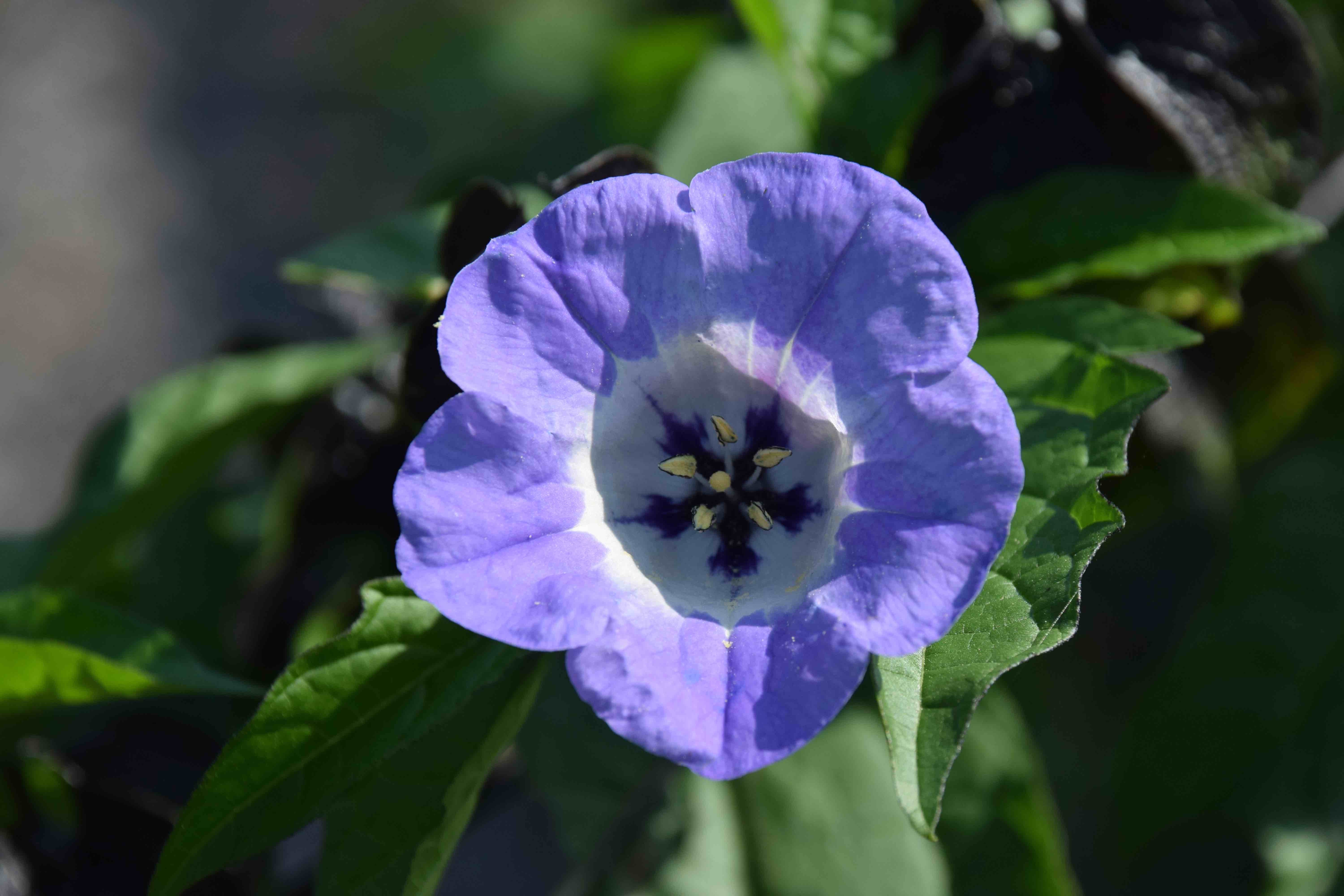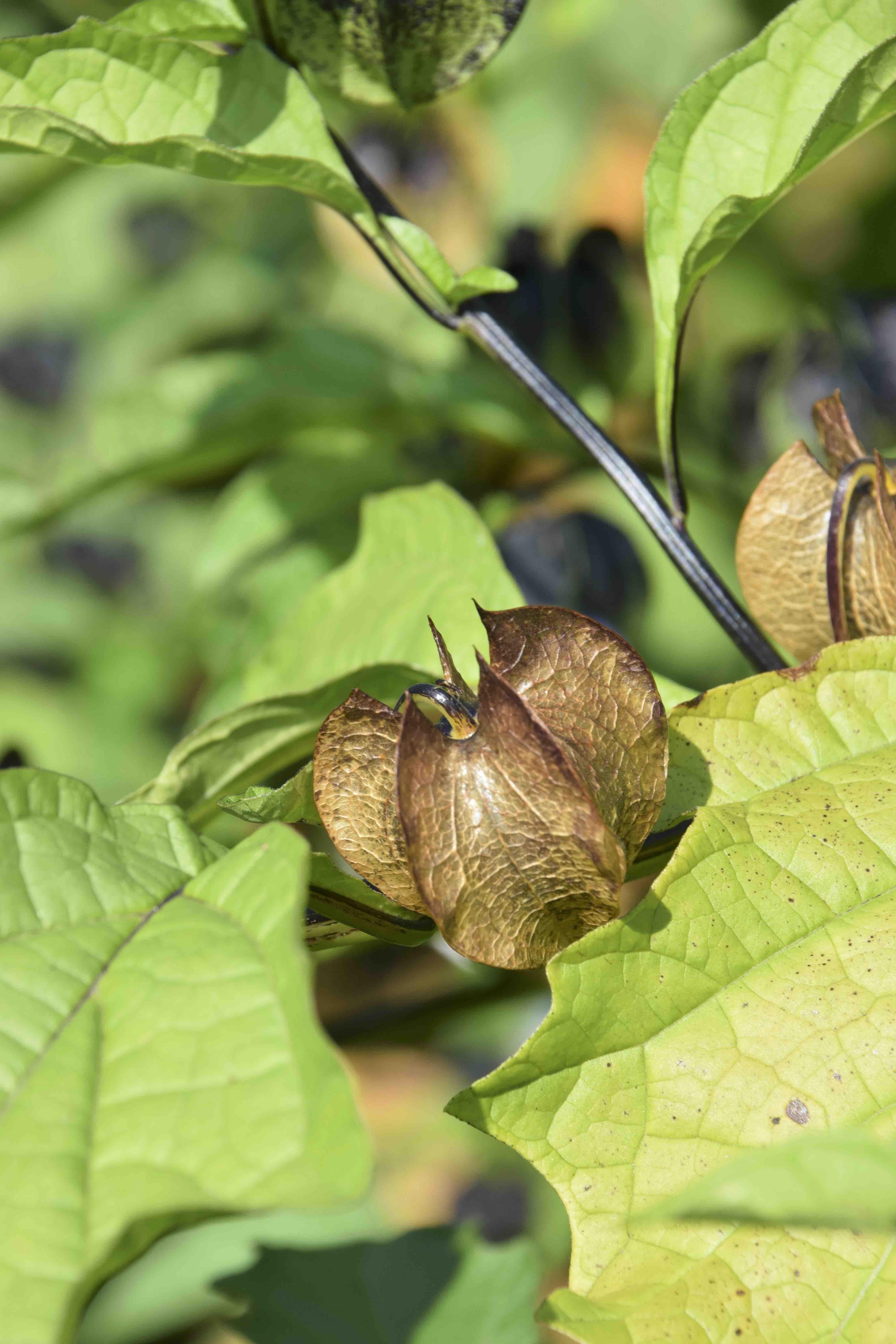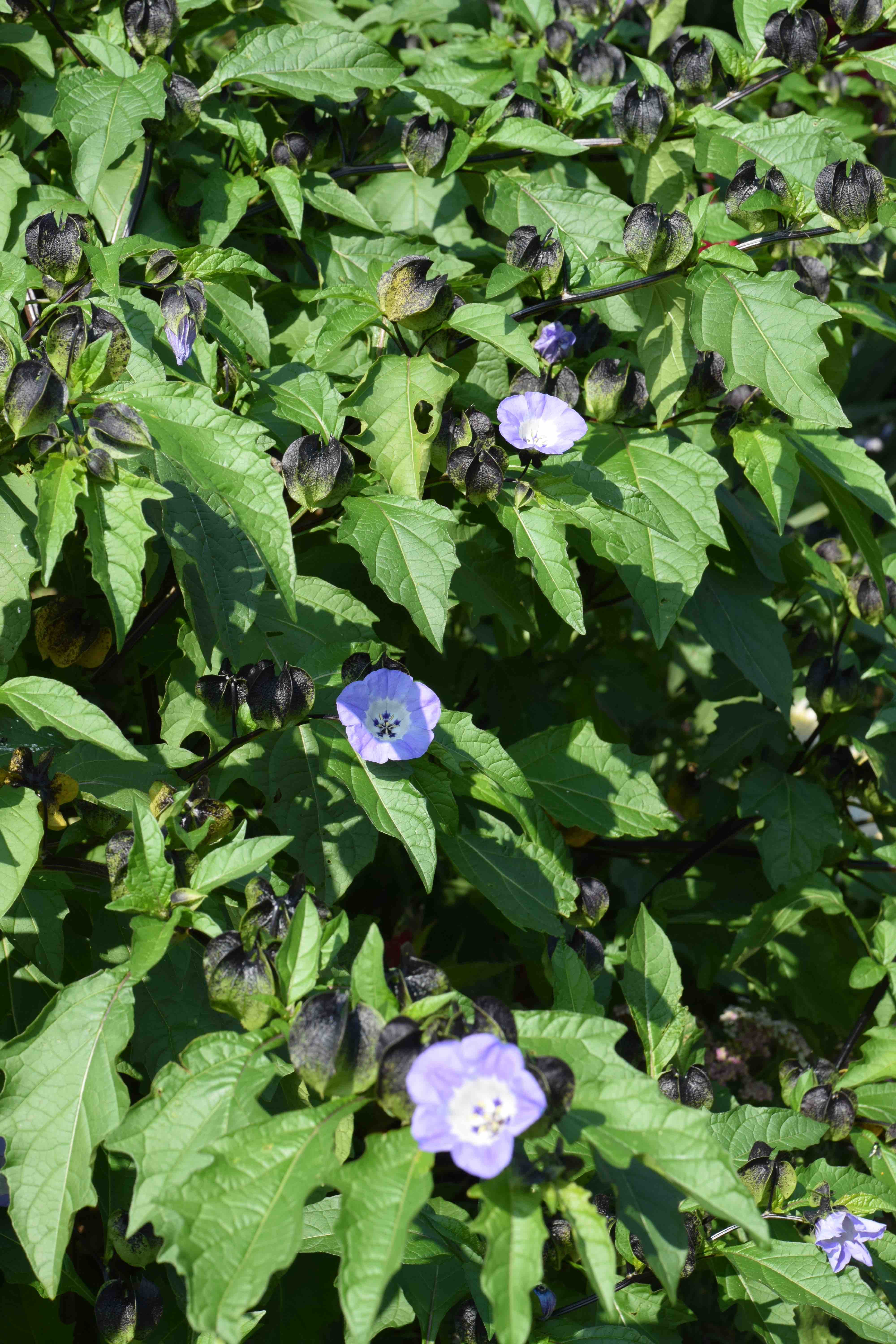Plant of the week

Nicandra physaloides Shoo fly plant
Why grow it?
Most people who have this plant don’t actually plant it – it just appears in their garden. In my other roles I answer a wide range of garden questions from a number of sources and every summer I get lots of questions, to identify this plant. The usual form is a tall annual with a thick stem that branches out to make a wide-topped plant that is almost shrublike. The flowers are beautiful though sometimes rather hidden by the leaves but hoverflies and bees seem to find them easily enough. The flowers are followed by round seed pods, complete with five showy sepals that bely its family links with physalis, both edible and ornamental. There is also a form with deeper blue flowers and almost black stems and there is a variegated form that is a much nicer garden plant. Nicandra is supposed to deter flies, especially whitefly, hence the common name. It is also called apple of Peru though it is not edible. After flowering, the seed heads on the stems can be dried for winter decoration, perhaps sprayed gold, after the dead leaves have been stripped from the stems.

Where to grow it
If this plant has popped up in your garden, unless it is in a really awkward spot, it can be left where it is. It grows 1m or more in fertile soil where there is lots of space and is best in sun. In poor soils it will flower at a much more stunted 60cm. It can selfseed freely and the seeds can remain dormant for several years in the soil. It is a good addition to ‘subtropical’ beds with cannas, dahlias and Ricinus.
Where to start
If you don’t have a plant that volunteered itself, buy seeds and sow in spring. They germinate easily but can be slow. Either sow direct where you want them in April or in a pot in March in a greenhouse. Do not let the young plants get starved or crowded when young or they will flower when tiny and not grow to their full potential.
Who will like this?
If you like unusual plants that are good for wildlife, this could be for you. It flowers for a long time in summer and is definitely a talking point, but it can take up a lot of room by September when it is fully grown. The dried seed pods are a flower-arranger’s or crafter’s dream.

Plant them with …
Other large summer plants or use them to fill gaps in shrub borders in summer.
Note: The toxicity of this plant is debatable. I would suggest not eating any part of it and to be cautious when handling the plant – wash hands afterwards. In various countries, most parts of it have been eaten or used medicinally, usually after processing, and it is unlikely to be dangerous to you, or pets, or children, unless eaten in large quantities. The fruits are not fleshy or tasty, though they do look a little like Cape gooseberries. I have never had any bad effect after handling the plant and I have cut and dried lots of it in my time.
Jobs for the week
Tomatoes
Keep feeding and watering your plants. Feed with tomato fertiliser at least once a week with tomato fertiliser. If plants lack vigour switch to a fertiliser that is lower in potash such as Miracle-Gro for a week or two. This will give the plants a boost and leaf and stem growth will be stronger. Keep removing side shoots. Remove lower leaves when they become yellow and not before – the plant needs healthy leaves.
Hanging baskets
Hanging baskets often start to look jaded by now but it is not inevitable. To keep your baskets looking good you must water often to make sure they never dry out. And you must feed at least once a week. As the plants get bigger they need even more water and fertiliser. Make sure you remove dead flowers too.
Bird food
Make sure you keep bird baths clean and topped up. Birds come to rely on us for feed so keep providing a range of feed for them. It took a while but a woodpecker has finally found my peanut feeder so I don’t want it to visit and find nothing to eat !
Beans
There is just time to sow a last crop of dwarf French beans. You can also sow lettuce and other salad veg.